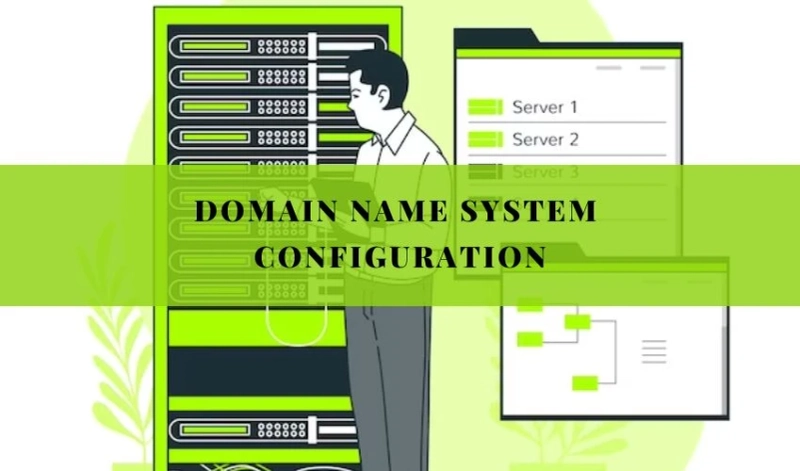Domain Name System Configuration of the internet, the DNS serves as a foundational pillar, translating human-readable domain names into machine-readable IP addresses. DNS configuration is a crucial aspect of managing your online presence, ensuring that visitors can easily find and access your website. In this comprehensive guide, we will unravel the intricacies of DNS configuration, exploring the key components and best practices to optimize your domain’s performance.
Understanding the Basics of DNS:
Before diving into configuration details, it’s essential to grasp the fundamental concept of DNS. At its core, DNS acts as the internet’s phone book, translating user-friendly domain names like www.yourwebsite.com into the numerical IP addresses that computers use to identify each other on the network. This translation is imperative for seamless communication between devices.
Choosing a Reliable DNS Provider:
The first step in DNS configuration is selecting a reliable DNS provider. While many domain registrars offer default DNS services, third-party providers like Google Cloud DNS, Amazon Route 53, and Cloudflare DNS bring additional benefits such as improved performance, security features, and advanced configuration options. Assess your specific needs to determine the provider that aligns with your requirements.
Setting Up DNS Records:
DNS records are the building blocks of DNS configuration, specifying how domain names should be mapped to IP addresses. Common DNS record types include:
A Records (Address Record): Maps a domain to the corresponding IPv4 address.
AAAA Records: Similar to A Records but for IPv6 addresses.
CNAME Records (Canonical Name): Creates an alias for one domain to another.
MX Records (Mail Exchange): Specifies mail servers responsible for receiving emails on behalf of the domain.
TXT Records (Text): Holds arbitrary text information, often used for domain verification and authentication.
Understanding how to create and modify these records is essential for tailoring your DNS configuration to suit your specific needs.
TTL (Time-to-Live) Considerations:
Time-to-Live is a crucial aspect of DNS configuration, determining how long DNS information is cached by resolving servers. Setting an appropriate TTL is a delicate balance; a longer TTL reduces the load on authoritative DNS servers but may lead to delayed updates, while a shorter TTL ensures quicker updates but increases server load. Consider your website’s update frequency and adjust the TTL accordingly.
Primary and Secondary DNS:
To enhance the resilience of your DNS configuration, consider implementing primary and secondary DNS servers. Primary servers handle DNS queries, while secondary servers act as backups, ensuring continuity in case the primary server experiences downtime. This setup adds redundancy to your DNS infrastructure, improving overall reliability.
DNS Security Best Practices:
Securing your DNS configuration is paramount to safeguard against various cyber threats. Implementing DNS Security Extensions (DNSSEC) adds an extra layer of protection by digitally signing DNS data, preventing tampering, and ensuring the authenticity of responses. Regularly monitoring DNS logs and staying informed about emerging threats helps maintain a secure DNS environment.
Anycast DNS for Improved Performance:
For websites with a global audience, leveraging Anycast DNS can significantly enhance performance. Anycast allows multiple servers to share the same IP address, directing users to the nearest server geographically. This reduces latency and ensures a faster response time, ultimately improving the user experience.
IPv6 Adoption:
As the internet transitions from IPv4 to IPv6 due to the exhaustion of IPv4 addresses, it’s crucial to ensure your DNS configuration supports IPv6. This involves adding AAAA records to your DNS settings, enabling users with IPv6-capable devices to access your website seamlessly.
DNS Monitoring and Analytics:
Regularly monitoring DNS performance is essential for identifying and addressing issues promptly. Utilize DNS analytics tools to gain insights into query volumes, response times, and potential security threats. These tools empower you to make informed decisions about your DNS configuration, optimizing it for efficiency and reliability.
Conclusion:
Domain Name System Configuration In the dynamic landscape of the internet, mastering DNS configuration is fundamental to establishing a robust online presence. By understanding the basics, choosing a reliable DNS provider, configuring DNS records, considering TTL, implementing security measures, and optimizing for performance, you can ensure that your website is easily accessible, secure, and resilient. As technology evolves, staying informed about emerging trends and best practices will empower you to adapt your DNS configuration for the ever-changing digital landscape.


